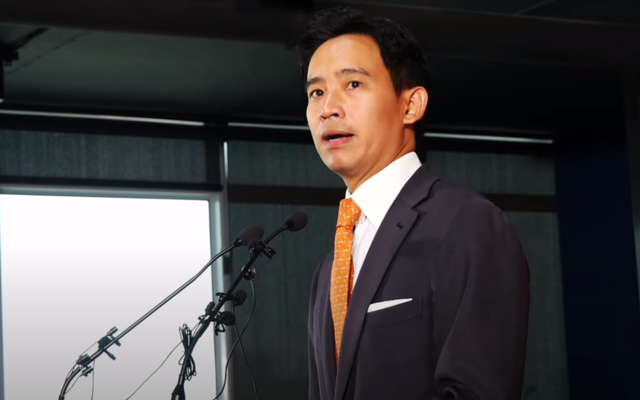It is often expected that a stable and effective democracy requires a governing party to win the support of a majority legislature to form a government. Yet, in recent decades an increasing trend of minority and coalition governments in combination with recent election results from Spain and Poland raise vital questions concerning what trends mean for the evolution of democratic institutions and political competition. Approximately ⅓ of parliamentary democracies are typically governed by minority cabinets (Field and Martin 2022).
Recently highlighted by Spanish politics, an extremely politically fractured election failed to establish a majority to the left or right-wing blocs. Pedro Sánchez’s Spanish Socialist Workers’ Party (PSOE) aimed to form a coalition government despite the fact that the People’s Party (PP) won more seats, due to the PP failing to form a majority. Similarly in Poland, the conservative Law and Justice (PiS) won the largest share of the votes (35.4%), but failed to achieve a majority, unlocking the door for the opposing left-wing parties to form a coalition to lead Poland for the next term.
2023 Spanish Election Results: A Case in Minority Governments
It is no new phenomenon for Spain to be led by coalition or minority governments. Since the 1970s, 73% of Spain’s governments have not been able to form a single-party majority. This trend continues to grow through 2023 (Field 2016). Spanish PM Sánchez called for snap general elections early in July 2023 after his party suffered heavy losses across regional and municipal elections. According to Sánchez, it was time for the people of Spain to take the floor and define the country’s political direction.
Sánchez pictured in Parliament after securing a majority once again / Image: Javier Soriano/AFP via Getty Images
With Spain’s electoral system punishing split tickets, the far-left populist Podemos party lost several regional positions due to the left-wing votes going to Sumar’s popular left-leaning party. This forced a rapid process of coalition formation between the left-wing parties of Spain. Ultimately, following four months of political paralysis where PP won most of the votes but failed to secure a majority, Sánchez once again won backing to form the new government. However, this was only made possible due to Sánchez’s immediate negotiations and concessions to secure the backing of separatist and regional parties, who eventually supported his rhetoric.
This scenario emphasises the continuing trend of minority governments in Spain, necessitating broader coalitions and cross-party negotiations for governance. The consequences reflect a fragmented political landscape in Spain, with traditional parties not only being challenged by regional forces but also heavily reliant on pandering parties outside to secure their political power. The role of smaller regional parties, especially from Catalonia and the Basque Country, have become crucial in the balance of power influencing national politics beyond regional interests.
These election results highlight the complexity and evolving nature of Spanish politics. Traditional two-party dominance has given way to a more pluralistic and fragmented political arena. These complex negotiations and vast ideological differences between Sánchez’s backers will have widespread impacts on the ability of the new government to pass major legislation.
The 2023 Polish Election Results
Poland’s opposition parties / Image: Politico
The Polish elections resulted in the incumbent party being ousted by a coalition of opposing parties on the back of the highest voter turnout (74.25%) since their first free elections in the country in 1989 (62.7%). Consequently, the democratic process during these elections was arguably as fragmented as the one in Spain. A joint observatory mission of OSCE and the Council of Europe stated that “the overlap between the ruling party’s campaign messages and government information campaigns involve state-controlled companies and their foundations, including the referendum, gave a further significant advantage to the ruling party”, describing “a highly polarised atmosphere”.
Despite that, the incumbent Law and Justice (PiS) party is on the verge of losing its hold on the government after nearly a decade in power. Despite winning 35.4% of the votes, the most of any party, Tusk’s Civic Coalition, Third Way and the New Left have pledged to form a coalition government to oust PiS from power, securing 53.7% of the votes, as shown below. This shift reflected a significant public desire for change, particularly toward restoring democratic standards and EU alignment.
Source: National Electoral Commission via Politico
A notable “youthquake” occurred, with a high turnout among young voters who predominantly supported the opposition. Issues like the treatment of the LGBTQ+ community and restrictions on abortion laws under the PiS government had mobilised the following sections of society against the ruling party: women and younger voters. However, these very issues raise concerns permeating coalition governments. Issues including abortion, social housing, and protection for farmers are major roadblocks to achieving consensus within Tusk’s coalition. Nevertheless, many say the joint aversion to the democratic backsliding prevalent during PiS’ rule will bind the new coalition together to tackle the most significant issues.
This shift suggests a response to the political polarisation under the PiS government which is memorable for illiberal policies. Voters sought a more democratic and EU-aligned government, guiding the new coalition in a direction where these values can be properly represented. Broadly speaking, the election results echo the ongoing fragmentation of traditional party systems, not just in Poland but globally. As voters move away from established parties, coalitions may become more common to represent a broader range of interests and viewpoints. However, in the same vein, questions arise as to whose interests a coalition can represent, considering the wide voter base that resulted in this new coalition government.
The 2023 Polish parliamentary election highlights how coalition governments can emerge as a response to political polarisation, societal demands for change, and the fragmentation of traditional party systems. Such governments offer a platform for diverse political representation and the possibility of addressing complex challenges through collaboration and compromise. The Polish experience is indicative of a broader global trend towards coalition governments in democracies facing similar political and societal dynamics.
The Consequences of Coalitions
The trend of European minority coalitions is illustrated by the recent elections in Spain and Poland signalling broader implications for democratic systems, both in Europe and globally. There are a few key implications for this growing trend throughout the world that can give insights into the future of democratic norms.
Firstly, the rise of minority coalitions challenges the dominance of traditional two-party systems, suggesting that voters are seeking more diverse political representation. As minority coalitions become more common in multi-party systems, they may inspire similar shifts in two-party states, potentially leading to more coalition-like agreements or power-sharing arrangements even within these systems. Two-party systems hence face pressures to adapt, possibly through electoral reforms (i.e., proportional representation) to accommodate the growing diversity of political views and the fragmentation of the political landscape. While coalition governments can enhance representation, they also risk political instability and policy inconsistency, as seen in the challenges faced by minority governments in maintaining cohesive support. The trend supports the emergence of new, smaller parties that can hold significant sway in coalition negotiations. This amplifies diverse political voices and interests but equally has the power to hamper significant legislation or proposals.
The US is dominated by a polarised two-party democratic system, which has only grown increasingly divisive in recent years. This prompted Robert F. Kennedy Jr. (a Democrat) to run as an Independent. He reflects a growing desire for political diversity beyond the traditional party lines. Kennedy’s polling success, especially among independents and younger voters, mirrors this shift, indicating a similar change in voter behaviour in the US. As Drummond (2006) highlights, voters have become less attached to a political party and prefer to focus on specific issues, causing spikes in electoral volatility. This encourages the formation of political parties representing a wider range of views. Kennedy’s candidacy is a manifestation of a desire for wider political views and representation in the American context, reflecting and potentially accelerating changes even in the political fabric of one of the most powerful democratic nations in the world.
Conclusion
The phenomenon of coalition formation, while more pronounced in the multi-party systems and minority governments of Europe, is increasingly relevant throughout the democratic world. It indicates a global trend towards more diversified and representative political landscapes. However, coalition governments in democracies still raise a fundamental question—do they dilute the clarity of the mandate, or do they enrich the tapestry of representation?
by Ayush Das
Cover Image: Pedro Sánchez conferencia “Proteger el ideal de Europa” 01 by Pool Moncloa / Borja Puig de la Bellacasa, via Wikimedia Commons








